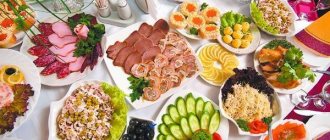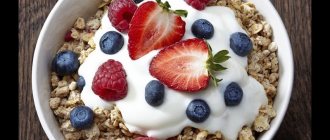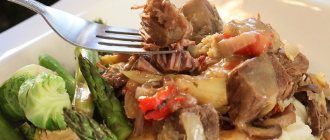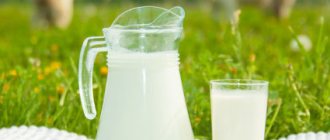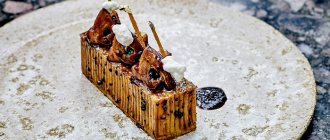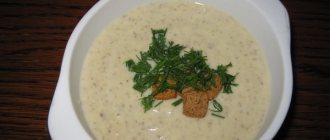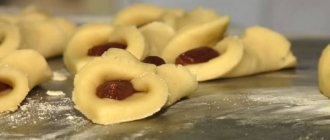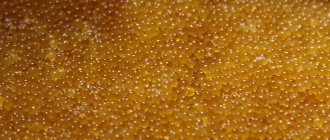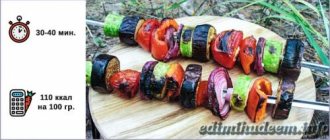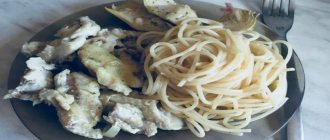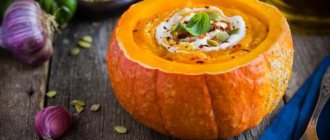Japanese diet ideal for those cases when, a week before an important event, you need to lose a few extra pounds and get into shape. It is a strict and monotonous diet, so not everyone can follow it without breakdowns. The weight loss results are amazing - up to 8 kg in 2 weeks. If you go through weight loss correctly, the lost kilograms will not return. An important part of the diet is preparation for it and exit. A week before it, especially if you are planning a two-week diet, you need to give up sweets, flour and fatty foods. It is also advisable to reduce portions to make losing weight easier.
Contraindications
The Japanese diet is quite strict and makes its own demands on those losing weight.
Because of this, they cannot sit on it:
- hypertensives and hypotensives;
- people who have problems with insulin;
- pregnant and nursing mothers;
- people with impaired metabolism;
- patients with pyelonephritis;
- people with gastrointestinal diseases;
- athletes and people involved in heavy physical labor.
If, while following a diet, frequent dizziness begins, and the condition worsens sharply, you should stop it and switch to proper nutrition. Otherwise, a breakdown may occur, and after returning to the previous diet, all the kilograms will return.
Pros of dietary nutrition
The advantages include:
- high efficiency;
- cleansing the stomach of undigested food residues;
- no need to prepare complex dishes;
- monetary savings (all dietary products are inexpensive);
- cleansing the skin by cleansing the stomach;
- reducing the consumption of fats and fast carbohydrates.
If you exit the diet correctly, the lost kilograms will not come back. To do this, you need to slowly introduce other healthy foods into your diet and gradually increase the calorie content of your diet. It is advisable to combine light physical activity with weight loss. For example, morning jogging.
Video
Cons of the diet
A nutritional system that excludes salt and fast carbohydrates does not leave its mark on the body. Its main disadvantages are:
- input is required, since it is difficult to maintain such a diet;
- reduced daily calorie content (from 900 to 1200 kcal);
- exacerbation of chronic diseases due to decreased immunity;
- lack of essential vitamins in food;
- monotonous food;
- constant feeling in the first days;
- following a diet for more than 2 weeks is harmful to health;
- severe fatigue, headaches and lack of energy due to low calorie intake.
Video
Salt retains fluid in the body, so on the Japanese diet it is suggested to avoid it or at least reduce consumption. Soy sauce is also contraindicated; it contains a large amount of salt. Reducing salt in the diet helps get rid of swelling, become more alert and energetic. It is due to excess fluid that the first kilograms of weight are lost.
Attention! In the first week, on average, a person can lose from 2 to 5 kilograms of weight. Over the next week, the weight will be more modest: from 1.5 to 3 kg.
This happens because by the second week the body begins to slow down its metabolism and fat burning occurs much more slowly. During the first week, the body still hopes for calories, but does not receive them, and therefore turns on the saving mode.
Recipes for fish dishes in the Japanese diet
Fish appears in the Japanese diet no less often than meat and vegetables. It is ideal if it is boiled, stewed or baked. Salt is excluded in the preparation of fish dishes, but there is no prohibition on spices or herbs.
To bake fish, it is first cleaned, cut into portions, washed and dried.
Then the fish pieces are rubbed with spices and sprinkled with lemon juice. To improve the taste, you can put vegetables or herbs inside the fish. The stuffed fish is wrapped in foil so that the juice does not leak out, and placed in an oven preheated to 190 degrees. The fish takes no longer than half an hour to cook.
Expert opinion
Smirnov Viktor Petrovich Dietitian, Samara
Already at the very beginning of the article it is said that if you go about losing weight correctly, then the lost kilograms of people using the Japanese diet will not return. Misconception. Lost pounds always return when a person loses self-control, because he subconsciously changes his diet, being sure that he can eat everything. It has been noted that the heavier the diet, the more it requires restraint and concentration from a person, the expenditure of energy, the greater the desire to reward oneself for the result obtained. And quite often, even those people who do everything correctly from the point of view of the diet technique, a month, two or three after leaving it, are surprised to discover that its results are gradually fading away.
As for the Japanese diet, as studies by nutritionists show, the vast majority of people whose age has exceeded 45 years can hardly adapt to it. The fact is that a significant restriction of salt in the diet is beneficial only in the first week, when excess water leaves the body. This allows you to stabilize blood pressure at the age level and reduces the load on the heart. If such a reduced intake of sodium in the body continues for a long time, then metabolic changes may occur. They are associated with changes in plasma concentrations of potassium, calcium and phosphorus. Therefore, if a person nevertheless decides to go on a Japanese diet, then it is advisable to monitor the ionic composition of blood plasma while following this diet.
Are there any disadvantages to the Japanese diet?
The Japanese diet is classified as a strict diet, and therefore has a number of restrictions. When using the Japanese diet, you should exclude from your diet:
- Consumption of any alcoholic beverages. Alcohol-containing drinks delay the release of toxins, so the body receives additional stress.
- The use of salt when cooking, because... salt delays the release of fluid from your body.
- Eating foods containing simple carbohydrates, which promote fat storage. These products include sugar and baked goods made from wheat flour.
If you cannot survive two weeks without these above-mentioned elements, then you should not count on the effect of the Japanese diet. Rather, it will cause harm, because... the load associated with metabolic restructuring is significant and additional stress will not benefit your body.
Another disadvantage of the Japanese diet is that it is not balanced. The Japanese diet menu contains few vitamins and microelements, which does not take into account the sufficient needs of the body. The Japanese diet is a strict diet. Therefore, frequent use of the Japanese diet is strictly prohibited.
Some doctors speak out categorically against the Japanese diet, due to the fact that it puts a lot of stress on the kidneys, because... her menu contains a large amount of proteins.
The essence and rules of the Japanese diet
The effect of the Japanese diet is based on the fact that the amount of fats and fast carbohydrates in the diet is reduced. You need to eat rice, seafood, fruits and vegetables.
Practical advice: The diet is monotonous, so during compliance it is recommended to take complex vitamins.
The Japanese diet for 7 days will help you get rid of 3 kg of excess weight, for 14 days - from 5 kg. It is not recommended to sit on it for more than two weeks; it is recommended to take a break and switch to a nutritious, balanced diet. Typically, the Japanese diet is used in cases where you need to lose a few kilograms before an important event. Japanese scientists believe that it should last exactly 13 days. In this country, the number 13 is considered lucky and brings good luck. However, in Europe, the diet usually lasts 7 or 14 days, since the number 13 is considered unlucky here.
The Japanese diet menu is presented in the table:
| Breakfast | A serving of rice and boiled vegetables with a pinch of salt, green tea |
| Dinner | Miso soup (can be replaced with any soy dish), tofu cheese, apple and a glass of tea |
| Dinner | A serving of seafood or fish, steamed vegetables, green tea |
The serving size is not indicated, since it is assumed that they will be small - 200–300 g each. The daily calorie content should be 900–1200 kcal. Be sure to drink at least 1.5 liters of water per day. Those who do not like plain water can replace it with green (not black) tea. Strong drinks are prohibited on a diet. You should also not eat bread, meat products, milk, sweets and flour, processed foods and fast food. If you consume more than normal, the weight will come off more slowly.
Allowed foods on the Japanese diet
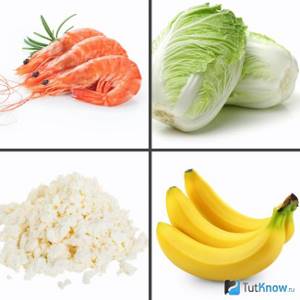
The Japanese diet menu is designed to increase the consumption of protein foods and reduce the proportion of carbohydrates in the menu. Despite this, the diet with this method of losing weight is quite varied. The main principle is to distribute calories in such a way that a person does not overeat at night.
Allowed foods on the Japanese diet:
- Seafood . Particular preference should be given to sea and river fish. It could be hake, cod, trout. Dishes prepared from them are extremely satisfying and healthy. Shrimp, oysters and mussels should not be consumed in large quantities.
- Vegetables . On the Japanese diet, you are allowed to eat white and Chinese cabbage, cucumbers, tomatoes, zucchini, carrots, and eggplants. They make excellent vegetable salads. You can also eat potatoes, but only in the first half of the day and in small portions.
- Fruits . Based on the principles of the Japanese diet, with such weight loss you can eat everything except grapes and bananas, because they have a high carbohydrate content. Allowed fruits are not recommended to be subjected to any heat treatment; it is better to eat them fresh.
- Dietary meat . This includes all low-fat varieties: chicken, beef, rabbit, veal, turkey. It is best to take fillet or brisket with a minimum content of fat and veins.
- Dairy products . It can be kefir, fermented baked milk or cottage cheese. All dairy products should be low fat, but not completely fat free. It is in this form that they are best absorbed.
- Natural coffe . It's great for breakfast - it helps you cheer up and quenches your hunger a little. However, it also has an undesirable effect - increased blood pressure. You cannot add cream, milk or other additives to coffee, as this will make it more caloric.
- Green tea . This is a great alternative to black tea. It should be without sugar and its substitutes.
- Olive oil . It is used for dressing vegetable salads. This oil is much healthier than sunflower and butter.
- Eggs . You can include both chicken and quail eggs in your diet, but not fried.
- Rusks and rye bread. They contain virtually no calories and go well with coffee or tea for breakfast.
- Purified water and fruit juices . They can be drunk in unlimited quantities.
Diet rules
Before the diet, it is advisable to prepare for at least a week. In 7 days you need to give up fatty, sweet, flour and fast food. This will make it much easier to stick to your diet.
The rules go like this:
- instead of coffee and black tea, you can drink green;
- after waking up and before eating, it is recommended to drink a glass of warm water, you can add lemon juice;
- sweetening and adding spices to dishes is prohibited, only adding a little salt is allowed;
- drink 1.5–2 liters of still water every day;
- food should be chewed slowly, in a calm environment;
- Products can be replaced only in cases of extreme necessity;
- for maximum weight loss you need to strictly adhere to this diet;
- days cannot be swapped;
- the exit should be gradual, not abrupt;
- Can be used only once every 3 months.
The Japanese diet is one of the strict diets that give quick results. If you follow all its principles and do not eat too much after it ends, the results will be stunning.
Important! In order not to gain back all the lost kilograms when leaving the diet, you need to slowly switch from dietary nutrition to proper nutrition.
You need to slowly increase your daily calorie intake, and in the first month after completing the diet, do not eat sweets, flour or fatty foods.
Video
Prohibited foods on the Japanese diet
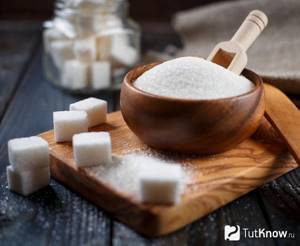
To achieve weight loss and volume reduction, you must adhere to all diet rules and give up a number of dishes.
Prohibited foods on the Japanese diet:
- Salt . This seasoning, although tasty, is undesirable for those losing weight. It retains water in the body, which makes weight loss much slower.
- Sugar . These are carbohydrates in their pure form, which are strictly prohibited when losing weight. Also, you should not eat all sweets (sweets, cookies, jelly, etc.)
- Bakery . Products made from wheat flour are very high in calories. In addition, these are carbohydrates that very quickly turn into fat deposits.
- Alcohol . They themselves are harmful. In addition, during weight loss, alcohol causes intoxication much faster.
- Semi-finished products . All dishes must be prepared from fresh ingredients. Thus, they retain maximum beneficial properties and minimum calories.
- Meat and fish with a high fat content . These are lamb, pork, goose and duck. They are slowly digested and are themselves difficult for the gastrointestinal tract to absorb.
- Vegetable and butter . They are much higher in calories than olive oil.
See also the list of prohibited foods on the Mediterranean diet.
Preparatory stage and exit
When preparing for a diet, you need to give up all junk food in your diet. The consumption of sweets and cakes, pastries, fatty foods, smoked sausages, salty foods, starchy vegetables (potatoes, beets) is reduced to a minimum.
Please note: On the last day of preparation, it is advisable to unload on natural drinking yogurt.
Many people find it difficult to get used to small portions on a diet. To make it easier, during preparation you need to gradually reduce your portions, and then the modest size of the dietary lunch will not be embarrassing. You also need to learn to chew your food slowly, this will help you get full faster.
The preparation menu looks like this:
- Breakfast - oatmeal or rice porridge on water with honey or coffee with a handful of dried fruits.
- Snack – fruit or a glass of fresh juice.
- Lunch – boiled meat with buckwheat or boiled vegetables, tea.
- Dinner – a portion of noodles with vegetables.
A way out is also needed, because a sharp return to the usual unhealthy diet is fraught not only with gaining kilograms, but also with problems with the liver and stomach. While losing weight, they become unaccustomed to digesting heavy food, and the sudden transition is stressful for them.
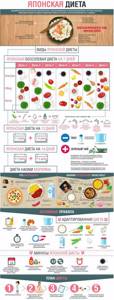
The right way out of the diet
A unique dietary diet must be followed for 2–4 weeks after the diet. During weight loss, the body gets used to small portions and low-calorie foods. Exiting the diet is necessary to maintain normal weight and optimal functioning of the digestive tract. It is recommended to return to your usual diet gradually: add carbohydrate-rich foods a little every day. The duration of the exit is at least 14 days.
Meals should be fractional, the weight of the portion cannot be increased. The diet should be dominated by foods that contain a small amount of calories and replenish the energy reserves lost during the weight loss process. It is not recommended to reduce the amount of protein foods consumed (chicken eggs, poultry and fish). Fats and carbohydrates are introduced into the menu gradually. Salt and sugar can be added in micro doses. Drinking should be plentiful; drink no more than 2 liters per day.
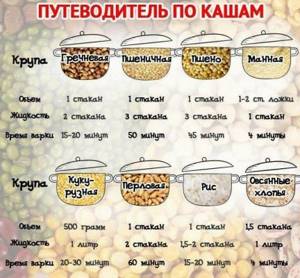
During the period of leaving the diet, you are allowed to eat porridge for breakfast. Oatmeal, buckwheat and rice are boiled in water. Vegetables and fruits are eaten raw in any quantity. It is best to give preference to sweet and sour varieties of apples. Between main meals, snacks are introduced: a glass of kefir or rice cakes. Rye bread is replaced with whole grain or yeast-free bread.
Pasta and confectionery products, baked goods and snacks are not included in the diet.
Recommended and prohibited products
For the first month after losing weight, you will have to forget about goodies. During this period, only healthy and low-calorie foods are allowed.
At this stage the following are allowed:
- green tea and coffee (not instant);
- dried dark bread;
- raw and cooked green vegetables, carrots, bell peppers;
- seafood, fish, boiled chicken breast (meat should be included in the diet from the second week);
- low-fat kefir;
- boiled eggs;
- tomato juice;
- vegetable oil (no more than 2 tablespoons per day);
- eggplants, zucchini;
- low-fat cheese;
- lemon, apples, citrus fruits and pears.
You should not eat sweet berries and fruits: bananas, peaches and grapes. Dried fruits are allowed, but in quantities of no more than 5 pieces per day. Lemonade, sparkling water and alcohol are prohibited. Sauces and seasonings, especially mayonnaise, are prohibited.
Recipes for meat dishes in the Japanese diet
You must strictly adhere to the diet recommendations. But on certain days it includes turkey, chicken and beef dishes. In such cases, you can use the recipes below.
Turkey meatballs
To prepare them, take 250 g of turkey fillet and make minced meat. Then it is flavored with chopped onions, herbs and made into meatballs. Separately, boil water in a saucepan with the addition of vegetable oil. The formed balls are placed there. Cook the meatballs for up to 20 minutes, then remove and sprinkle with herbs.
Chicken fillet cutlets in the oven
Take 500 g of chicken fillet and chop finely. Add chopped rosemary, onion, carrots and one egg to the mixture. Cutlets are formed from the minced meat and placed on a “boat” of foil (it is very important that it does not leak) and baked until cooked.
Beef with cabbage
To prepare, you will need 200 g of boiled beef, 2 boiled eggs, 250 g of chopped fresh cabbage and vegetable oil. The meat and egg whites are cut into strips, and the yolks are ground with butter. After this, combine all the ingredients, add the sauce and mix.
Menu for 7 days
The 7-day Japanese diet is more strict than the two-week diet. While following it, you can lose from 3 to 5 kilograms of weight, and if you exit correctly, the weight will be maintained. The menu for the week looks like this:
| Days/Meals | Breakfast | Dinner | Dinner |
| Monday | Coffee | 2 boiled eggs A glass of tomato juice Shredded cabbage with butter | 200 g fish |
| Tuesday | Coffee Rusk of dark bread | 200 g fish Cabbage with butter | 100 grams of beef A glass of kefir |
| Wednesday | Coffee | 1 raw egg Salad of 3 large boiled carrots with butter | 2 apples |
| Thursday | Coffee | Zucchini or parsnip root, 1-2 apples | 100 g beef Cabbage salad 2 eggs |
| Friday | 1 boiled or raw carrot with lemon juice | 0.5 kg fish A glass of tomato juice | 2 apples |
| Saturday | Coffee | 0.5 kg chicken breast Cabbage salad + carrots or one ingredient | 2 eggs Carrots with butter |
| Sunday | Coffee | 100 g beef Apples or pears | Any variant of the previous days, except apples |
Diet recipes
Dietary dishes are added to the menu upon departure. You can diversify your diet with salads, first and second courses. Homemade desserts with a low sugar content improve brain function and can be consumed after 14–15 days.
Diet salad “Nadezhda” includes the following ingredients:
- potatoes - (2 pcs.);
- milk sausages - (2 pcs.);
- chicken breast - (250 g);
- pickled cucumber - (1 pc.);
- greenery;
- salt;
- olive oil - (1 tbsp.).
Cut boiled potatoes, boiled chicken and sausages into cubes. Place the mixture in a deep bowl and add salt. Add cucumber cut into strips and finely chopped greens. Season the salad with olive oil (first squeeze).
Cabbage salad:
- Chinese cabbage - (250 g);
- fresh cucumbers and tomatoes - (250 g);
- chili pepper - (1 pc.);
- hard cheese - (150 g);
- salt;
- olives (1/2 can);
- olive oil.
Tear the Chinese cabbage leaves into small pieces with your hands. Cucumbers and tomatoes are cut into large pieces. Grind the chili (half a vegetable) in a blender. Mix all ingredients, add salt and season with oil. Top the salad with grated cheese and olives.
The first courses are eaten at lunch. For easier digestibility, soups are prepared pureed. Spinach and celery soup :
- lemon - (1 pc.);
- tomatoes - (2 pcs.);
- spinach - (200 g);
- celery - (stem, 2 pcs.);
- greenery;
- vegetable broth - (1.5 l);
- salt;
- olive oil - (1 tbsp).
Pour olive oil into a heated frying pan. Finely chop the celery stalk and sauté in oil. In a separate pan, boil the broth, place the chopped spinach in it and simmer over low heat for 5-7 minutes. Remove the skins from the tomatoes and grind in a blender. Add tomato paste to spinach. Salt the broth, add frying to it. Cook for 15–20 minutes. Add a little lemon juice and chopped herbs to the finished soup.
Mushroom cream soup:
- champignons - (8 pcs.);
- potatoes - (2 pcs.);
- zucchini - (300 g);
- carrots - (1 pc.);
- onion - (1 pc.);
- weak meat broth - (1 l);
- flour - (1 tbsp);
- olive oil - (2 tbsp);
- cream - (1 tbsp.)
Chop the boiled vegetables into small cubes and grind them in a blender. Bring the broth to a boil. Fry the flour until golden brown, add to the broth, and add vegetable puree. Simmer the soup over low heat until thickened, then add salt, add cream and garnish with herbs. The first course is served with rye crackers.
Beef stewed with vegetables:
- beef - (500 g);
- olive oil - (3 tbsp);
- potatoes - (200 g);
- carrots - (1 pc.);
- bell pepper - (1 pc.);
- onions - (1 pc.).
Sauté onion, bell pepper and grated carrots, cut into half rings, in olive oil. Boil the beef until half cooked, cool and cut into small pieces. Place the meat on the fried vegetables and add salt. Place sliced potatoes on top. Salt again. Pour meat broth into vegetables. Cook the dish over low heat for 25–30 minutes.
Indian manti is a dietary dish, the preparation of which takes place in 2 stages. Ingredients for the dough:
- flour - (1.5 cups);
- warm water - (1 glass);
- salt.
Dissolve salt in warm water. Place flour on a work surface and make a well in it. Pour in salted water in portions, gradually kneading the elastic dough. Cover it with a towel and leave for 15–20 minutes.
While the dough is “rising”, you need to prepare the dressing. Required components:
- champignons - (6–8 pcs.);
- carrots - (1 pc.);
- green onions - (4–5 feathers);
- zucchini - (400 g);
- olive oil - (2 tbsp);
- tomato paste - (2 tbsp);
- chicken fillet - (400 g).
Cut champignons, zucchini and carrots into small cubes. Pre-boil the chicken fillet and chop into strips. Fry the onions in oil and tomato paste, gradually adding carrots, zucchini, mushrooms and meat. Pour 150–200 ml of water into the roast and simmer the vegetables until tender.
Roll out the dough into thin strips and coat each with butter. Cut the strips into squares (10x10 cm), which are laid on top of each other. The dough is steamed in a pressure cooker or multicooker for 15–20 minutes. Place “columns” of dough on a dish, pour over vegetable sauce and sprinkle with herbs.
Menu for 14 days
If your condition after a week of losing weight is not bad (there are no frequent dizzinesses or significant loss of strength), then you can sit on it for another week. For those who are exhausted by the first week of the diet, it is better to finish losing weight and switch to a properly balanced diet. To avoid a lack of microelements and nutrients, you need to take complex vitamins.
| Days/Meals | Breakfast | Dinner | Dinner |
| From days 1 to 7 you need to follow the Japanese diet menu for 7 days | |||
| Eighth | Coffee | 0.5 kg chicken fillet Carrot and cabbage salad with butter | 2 eggs Medium carrots with butter |
| Ninth | Coffee | 200 grams of fish A glass of tomato juice | 200 grams of fruit |
| Tenth | Coffee | 1 egg Small piece of cheese Salad with 3 medium carrots with butter | 200 grams of fruit |
| Eleventh | Coffee Rusk of dark bread | Medium eggplant or zucchini | 1 egg 200 g beef Cabbage with butter |
| Twelfth | Coffee Rusk of dark bread | 200 g fish Cabbage-carrot or cabbage salad with butter | 100 grams of beef A glass of kefir |
| Thirteenth | Coffee | 2 eggs A glass of tomato juice Boiled cabbage with butter | 200 g fish |
| Fourteenth | Coffee | 200 g fish Cabbage with butter | 100 grams of beef A glass of kefir |
The Japanese diet is a strong shake-up for the body. It helps in a short time to get rid of extra pounds and tighten your figure. Its effect is based on a sharp reduction in daily calories and fat, which forces the body to begin burning fat deposits.
Video
During preparation and in the first month after its completion, it is advisable to engage in light sports. Short morning runs or muscle stretching are suitable. You can also do strength exercises, this will tighten your muscles and help make your body more toned.
Japanese diet menu by day
According to some sources, such a system is designed for 13 days, according to others – for 14. Let’s focus on the first option, since every day of this diet is the most difficult test for the body. We completely exclude salt, sugar, any alcohol and all white bread from the diet. It is forbidden to have even a small snack between meals, and you can only drink water.
For breakfast: only 1 cup of coffee, preferably natural, no sugar; For lunch: 2 eggs (hard-boiled), cabbage salad with dressing (olive oil), tomato juice; For dinner: fish (boiled, steamed or a luxurious option - fried in olive oil) about 200 grams.

For breakfast: the same cup of coffee, but with crackers (in no case wheat); For lunch: vegetable salad, fish, cooked in the same way as yesterday; For dinner: lean beef - about 100 grams, A glass of kefir (also low-fat) is allowed.
For breakfast: repeat the previous day; For lunch: zucchini fried in olive oil (here you can indulge in nothing and choose a larger vegetable); For dinner: today you have a feast: as much as 200g of beef, a couple of eggs and cabbage salad.
For breakfast: exclusively coffee (but you ate well in the evening, right?); For lunch: raw egg, hard cheese - 15 grams, chop three medium-sized carrots into small chips and season with olive oil; For dinner: almost any fruit (grapes and bananas are prohibited!)
For breakfast: carrots, now raw, seasoned with lemon juice to taste. Today you will have to do without coffee; For lunch: fish prepared according to the method you already know, tomato juice as a pleasant bonus; For dinner: repeat the menu of the previous day.
For breakfast: coffee with any (non-wheat!) cracker; For lunch: boiled chicken (just a holiday!), plus a salad of carrots or cabbage (raw), the usual dressing - olive oil. For dinner: 2 eggs (boiled, hard-boiled ), fresh carrot salad with traditional dressing.
For breakfast: tea (herbal or green); For lunch: boiled beef - about 200 grams, fruit (except forbidden bananas and grapes). For dinner: any of the already tested variations, only the dinner of the third day is not suitable.
- Day VIII completely repeats Day VI.
- Day IX - repeats Day V.
- Day X – repeats Day IV.
- Day XI - repeats Day III.
- Day XII – repeats Day II.
- Day XIII - repeats Day I.
As you can see, only the “central” day, the seventh day of the diet, is original and unique; all the rest are repeated twice.
The Japanese diet for 7 days is at the same time, so to speak, a light version of the traditional “Japanese” diet, but at the same time, the 7-day diet is the basis of the entire diet.
DETAILS: Dukan diet menu, calculate weight, recipes, reviews with before and after photos
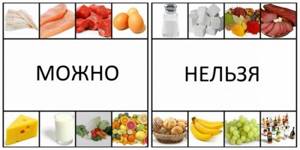
Predicted results: 3-5 kilograms left in the past.
Disadvantage: the longevity of the result is not guaranteed, since the body has not yet had time to adapt to the new metabolic system.
Day 1
Calorie content of the daily diet: 700 kcal.
Required Products:
- black coffee;
- chicken eggs;
- fresh cabbage (Beijing/white cabbage);
- tomato juice (ideally freshly squeezed);
- low-fat fish.
Breakfast:
- black coffee - it is better to give preference to espresso, but it is better to forget about sugar.
- boiled chicken eggs (2 pieces are possible);
- “Japanese” salad – fresh cabbage and a little vegetable oil, no need to add salt;
- A glass of tomato juice.
- steamed fish - hake, cod, pollock are ideal (portion no more than 200 grams);
- "Japanese salad"
Day 2
Calorie content of the daily diet: 1000 kcal.
- coffee;
- crackers;
- fish (fatty varieties);
- cabbage;
- vegetable oil;
- beef;
- kefir.
Breakfast:
- coffee;
- cracker – take a small one, weighing about 30 grams.
- fish, fried or stewed - for variety and additional consumption of fatty acids, it is better to give preference to catfish, salmon, and black halibut. Total total no more than 150 grams;
- "Japanese" salad.
- beef - boil approximately 200 grams. Consume without salt;
- kefir - low-fat, but not more than a 200-gram glass.
Day 3
- coffee;
- zucchini/parsnips;
- apple;
- chicken eggs;
- veal;
- cabbage;
- vegetable oil.
Breakfast:
- black coffee – don’t forget about the moratorium on sugar.
- zucchini (still large) or parsnip root (also large) - brown in vegetable oil (do not use flour or batter for frying, salt is also prohibited);
- apple – don’t get carried away, it is advisable to limit yourself to one fruit.
- boiled chicken eggs – 2 pieces;
- boiled veal - limit your appetite to a 200-gram piece, prepared in a salt-free manner;
- "Japanese" salad.
Day 4
- coffee;
- carrot;
- hard cheese;
- chicken egg;
- apples.
Breakfast:
- black unsweetened coffee.
- carrots - boil, you can take 3 larger roots;
- a little cheese - choose from hard varieties, limit yourself to 20 grams;
- raw chicken egg - one is enough.
All ingredients for a 4-day lunch can, if desired, be combined into a single dish - salad.
- apples - you can eat a few fruits.
At this stage, the feeling of hunger will no longer be as strong as before. Satiety comes after small portions of food.
Day 5
Calorie content of the daily diet: 800-1000 kcal.
- carrot;
- lemon juice;
- sea fish;
- juice;
- fruits.
Breakfast:
- carrots and lemon juice - grate the vegetable and season with juice. Sugar cannot be added. Also excluded from breakfast and coffee on this day.
- fried fish - take about 350-400 grams, variety - any of the sea;
- juice from tomatoes - for a diet it would be more correct to use fresh juice prepared independently. Volume – no more than 200 grams.
- fruits - but in no case should you consume, especially before bedtime, grapes of any kind, or bananas. They will erase all the results achieved up to this time.
Day 6
Calorie content of the daily diet: 900-1100 kcal.
- coffee;
- chicken fillet;
- raw cabbage;
- carrot;
- vegetable oil;
- chicken eggs.
Breakfast:
- chicken fillet - limit the portion to 500 g, take the meat without skin. Boil in water without adding salt;
- salad – on this day, the traditional “Japanese” salad can be improved by adding grated raw carrots.
- chicken eggs - boil 2 pieces;
- carrots (you can take a large one) - grate the raw vegetable, season the salad with a small amount of vegetable oil (maybe olive oil).
Day 7
Calorie content of the daily diet: 700-800 kcal.
- tea;
- fruits;
- beef meat;
- eggs;
- cabbage;
- vegetable oil.
Breakfast:
- tea – it is advisable to opt for good varieties of green tea, rich in beneficial antioxidants.
- beef meat - boil about a 200-gram piece. Do not use salt or other spices during cooking;
- fruits – on the last day of the diet, you can treat yourself to a lunchtime dessert. But do not forget about the ban on eating bananas and grapes.
On this day, for dinner, as a reward for endurance, you can choose any dinner option from the previous days. For example, opt for the option of beef, eggs and cabbage salad, dressed with olive oil.
This is where the diet ends for some. For those who have chosen longer versions of the “Japanese”, day 7 is only the equator of work on changing oneself.
To those unaccustomed to eating by counting calories, the “Japanese” diet may at first seem like a rather tough option for losing weight. But the discomfort will be noticeable only in the first few days - then the body adapts to small portions of food and begins to fill up faster. After the 5th day of the new diet, the body begins the first stage of adjustment to speed up metabolism - the main goal of any diet for losing excess weight, excess fluid is removed, and swelling disappears. To achieve better results, you can take a course of anti-cellulite massage in parallel with the diet.
Predicted results. If you conscientiously adhere to all the instructions, at the end of the 13-day period you will be missing approximately 10 kilograms and about 30 cm in volume (sometimes more).
How is it different from the 7-day option? In fact, this is a continuation of the light version of the “Japanese”. That is, you will have to go through 7 days of “Japanese” life, and on the 8th day start all over again, repeating days from the first to the sixth.
The basis for the 14-day version of the Japanese diet was also the 7-day menu, albeit with some nuances. The main difference from the previous two options is that in the first week you must strictly adhere to the 7-day menu, and in the second week you must eat according to the same program, but in the opposite order.
Starting from the 8th day of dietary nutrition, the detoxification process in the body is activated, and thanks to the salt-free principle of nutrition, excess fluid is removed at the intercellular level, completely eliminating edema. It is important that it is in the second week of the diet that the body gets used to the new metabolic rate.
Thanks to this, even after switching to a normal diet (regular does not mean eating in bowls again for the coming sleep, but you also don’t need to live in “hunger” mode), the body will not gain weight, on the contrary, fats will be burned as quickly as during a diet. This wonderful effect will last about 2 years.
But provided that the diet was followed correctly. Those who have already experienced the work of the “Japanese woman” claim that throughout the year after completing the diet, the weight continues to be adjusted downwards. If you repeat the “Japanese” one more time (but not earlier than six months after the first course), then in a year you can actually get rid of 20 kg of excess weight with almost no effort.
The Japanese diet is very similar in its diet to the famous chemical diet, which is often used to treat obesity in diabetics. It also uses the effect of reducing the amount of carbohydrates while increasing the proportion of protein.
Day 1
Breakfast: black coffee without added sugar, sweeteners or milk.
Lunch: 2 hard-boiled eggs, boiled cabbage, seasoned with vegetable oil, and a glass of tomato juice.
DETAILS: Cucumber diet for losing 10 kg in a week
Dinner: 200 gr. fried or boiled fish.
Day 2
Breakfast: black coffee with a slice of rye bread.
